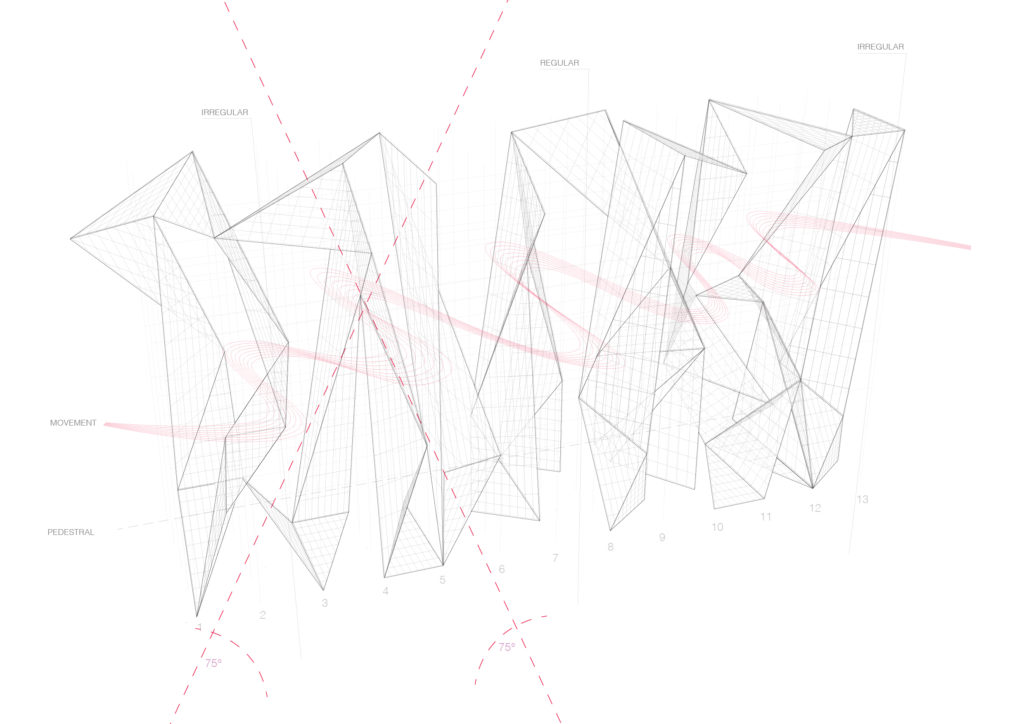Edge-affected guidance in architectural interiority
How we define edges, determines the way we approach architecture… and especially architectural interiority.

Interiority can be seen as a field of flexible interrelationships and is perceived as context-sensitive. Depending, in which space someone is located, the conditions vary and affect the perception of interiority differently. As edges emerge as central in guiding visitors through buildings, they simultaneously impede someone in exploring the building.
This counts for the visitor’s view, the perceived sound and lightning as well.Edges emerge as central in disclosing new/other relations within the building that mark the interior, exterior and the “invisible” boundary between. In case of the Hollyhock House, it is interesting that the edges have this impact on the boundary between interior and exterior in a horizontal (by the steps) as well as a vertical way (by the corners).

OBSERVATIONS
Edges emerge as central in the context of interiority and affect.
- Guidance
- Shift in view
- Rotation
- Movement
- Perception of sound depth/sound absorption
- Perception of lighting
- Perception of privacy/intimacy
PROTOTYPE



Concluding, edges massively predefine the conditions of interiority and as next logical step the conditions of an urban environment (see Venice example with regard to the depth of sound in narrow streets compared with crowded, public spaces).
